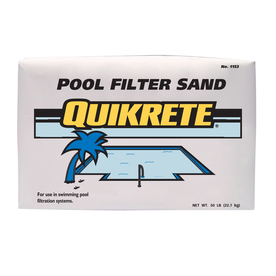

If you’re ready to start the process of installing pavers, consider using polymeric sand. It is key that you take necessary precautions to make sure the sand is installed correctly, but it will be worth it in the long term to use a product that is known for being better quality, long lasting, and an eye catching finish to your hardscape. The combined benefits of durability, lasting strength, and pest deterrent makes it clear that it is worth it to go with the option of buying and implementing polymeric sand instead of sand from your backyard sandbox. If in doubt about which product to use, try sweeping sand! It is simple to use a push broom to push sweeping sand down into the joints between your pavers and fill in the cracks, preventing those annoying ants and stray weeds from making themselves at home. So, is it worth it to use polymeric sand? Avoid the common mistakes by following the manufacturer’s instructions and educating yourself on the best process to use. Polymeric Sand has many benefits, however, the biggest drawback is that it can be easy to mess up, especially if you don’t follow the manufacturer’s instructions.

When installed improperly, polymeric sand will ruin your hardscape. Polymeric sand, when installed improperly, will ruin your hardscape
#Silica sand lowes install
However, you should NEVER install polymeric sand when it is raining! Rain activates the polymers before the sand is in the joints which will ruin your hardscape by producing a haze and adhering sand grains to the surface of the pavers. This can be a benefit-you don’t have to worry about it creating a mess that you can’t get rid of, and it makes the finishing process simple. The drawbacks of polymeric sandĪre there any drawbacks to polymeric sand? The benefits definitely outweigh the drawbacks, but it is important to know what you are dealing with when you are implementing the polymeric sand into your paver joints. Standard colors come in Gray, Tan, and Black, along with some unique blends of those same colors. You can have the freedom to pick the color that best complements the aesthetic of your hardscape, and not have to worry about the joints in your pavers looking boring or not matching the rest of the outdoor space. Polymeric sand comes in a variety of different colors
#Silica sand lowes free
This will leave your pavers clean and free from pests. Polymeric sand is an ant deterrent! The little creatures cannot burrow down in the cracks. Most of us have childhood memories of poking around in paver joints and concrete cracks to disturb an ant nest… and getting attacked by an angry family of red ants. It helps keep weeds from living as an eyesore in between the otherwise beautiful paving stones. Pesky moss cannot grow, grass and dandelions cannot take root in polymeric sand. Regular sand is much more likely to slowly trickle out of the joints, leaving your pavers looking sloppy. This is especially crucial if you live in one of the regions of the Pacific Northwest that experiences a high amount of rainfall. Unlike regular sand, polymeric sand will not be washed away by heavy rain Polymeric sand improves the overall durability of the hardscape you installĭurability is a major selling point for pavers, and employing polymeric sand will just extend the lifespan and stability and resilience of your project.

Why should you use polymeric sand to finish your paver project? There are several important reasons. Let’s explore more about polymeric sand and what some of the benefits and drawbacks might be for your hardscape project. It will also bond your pavers together so weeds and insects don’t make their home between each slab or stone. However, polymeric sand is unique because it will allow the joints to expand and contract with the elements like hot sun during the summer and below-freezing temperatures in the winter. When it comes to sands, there are a few options to choose from, such as a natural fine dry sweeping sand or a synthetic sand blend. Polymeric sand adheres to itself better than regular sand does, which is important from the varying elements a patio or hardscape will see over it’s long life. Silica is such an additive and is often used to help lock the fine sand particles together.”Īs we mentioned before, polymeric sand is a different product than the sand you would get from your backyard sandbox or the sand from the beach. Share to Facebook What is polymeric sand?Ī quick Google search will tell you that “Polymeric sand is a fine sand that is combined with additives that form a binding agent when exposed to water.


 0 kommentar(er)
0 kommentar(er)
